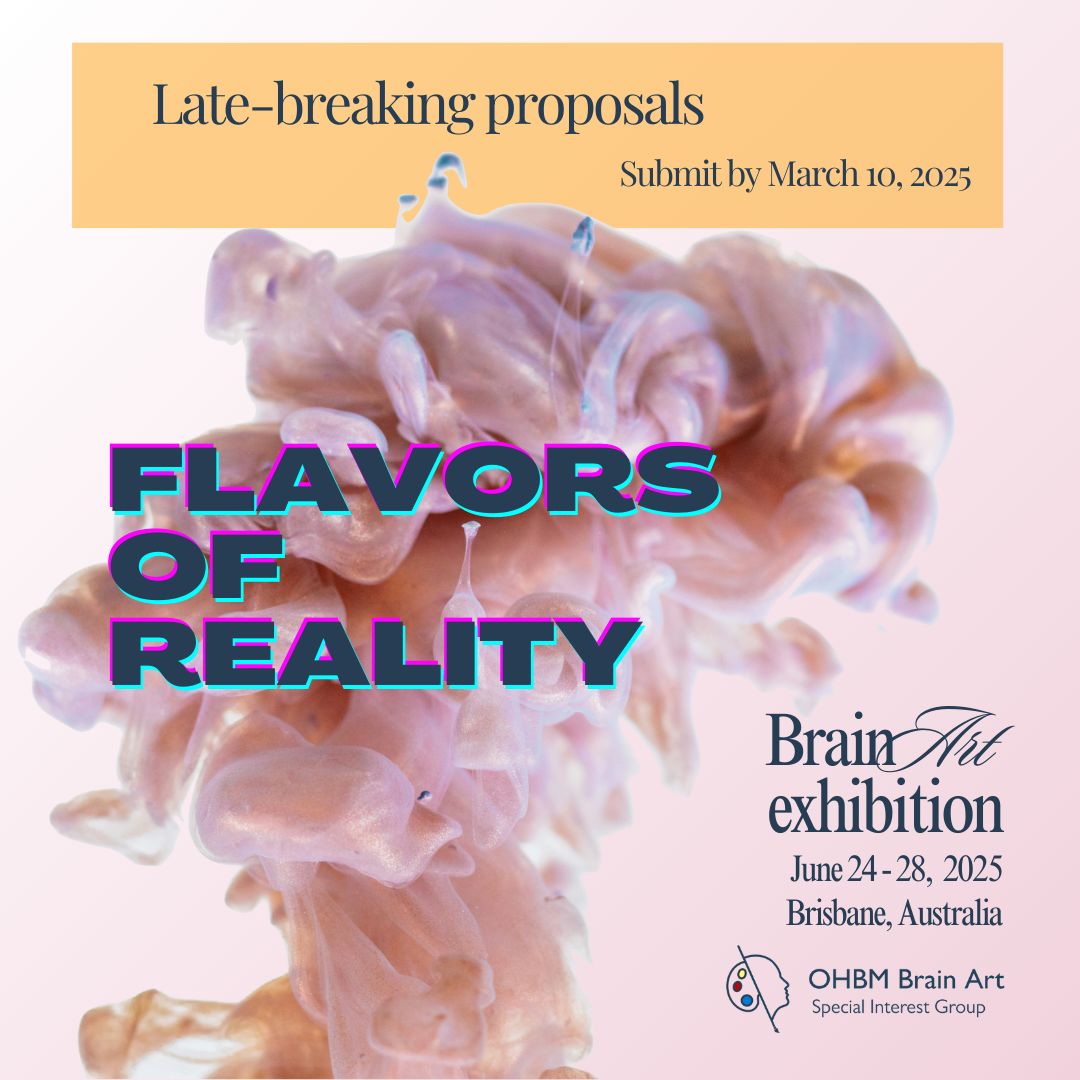2025 BrainArt Exhibit
Flavors of Reality
CALL FOR LATE-BREAKING PROPOSALS OPEN!
We are receiving late breaking submissions in the form of sculptures, interactive displays, and AI-generated pieces.

Click here to submit your proposal.
Flavors of Reality
The Flavors of Reality theme explores the multifaceted dimensions of reality—from materialistic to virtual, from individual to collective. Reality stands as the ultimate pursuit of both neuroscientific and artistic inquiry. In neuroscience, one of our goals is to understand how the brain constructs, perceives, and interacts with the physical world around us, as it is. In art, our aim is often to reimagine, escape and transcend what science defines as “real”. In between these views, the emerging field of Artificial Intelligence (AI) has been pushing us to view reality as a construct that can be simulated, manipulated, and ultimately redefined.
In this year's exhibition, we would like to invite people to reflect on the dynamic and ephemeral nature of reality, by bringing together concepts from cognitive neuroscience, art, technology, sociology, and philosophy. We would like to focus specifically on the concepts of perception and consciousness both from an individualistic and societal perspective. What does our brain's perception of reality tell us about the limits of human cognition and its altered states? How is art extending the boundaries of what is possibly real? How does consciousness shape our sense of self and society? How does AI challenge our ideas of what it means to know and feel? How do we wish to re-evaluate this landscape to better account for our different realities?
Thus, Flavors of Reality is a product of interdisciplinary ideas inviting people to reflect on the subjective nature of reality. Artworks in this exhibition will serve as "fingerprints" of the brain urging us to redefine what it means to see, know, and connect with reality, in an era where technology, individual experiences, and society intertwine.
The exhibition will be held at the Organization for Human Brain Mapping (OHBM) Annual Meeting between June 24-28 2025, in Brisbane, Australia. Artists and scientists are invited to submit their proposals for the exhibition in any form (still images, videos, sculptures, written word, interactive displays).
Important dates:
Don't miss our updates and announcements, join our mailing list
Exhibition info:
- When? June 24 - 28, 2025
- Where? OHBM 2025 Annual Meeting. Brisbane, Australia.
Past Brain Art Exhibits
2023 The Multifaceted Brain: Adaptation and Diversity
See exhibited works